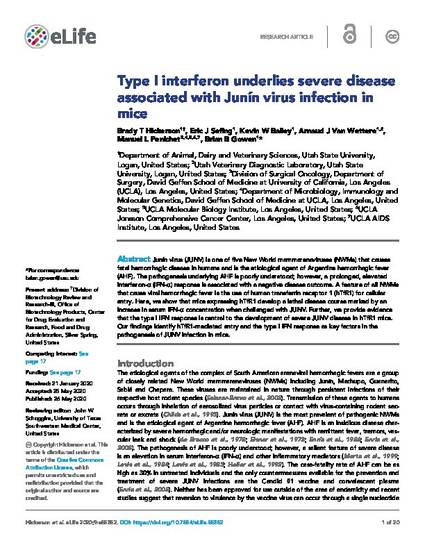
Junín virus (JUNV) is one of five New World mammarenaviruses (NWMs) that causes fatal hemorrhagic disease in humans and is the etiological agent of Argentine hemorrhagic fever (AHF). The pathogenesis underlying AHF is poorly understood; however, a prolonged, elevated interferon-α (IFN-α) response is associated with a negative disease outcome. A feature of all NWMs that cause viral hemorrhagic fever is the use of human transferrin receptor 1 (hTfR1) for cellular entry. Here, we show that mice expressing hTfR1 develop a lethal disease course marked by an increase in serum IFN-α concentration when challenged with JUNV. Further, we provide evidence that the type I IFN response is central to the development of severe JUNV disease in hTfR1 mice. Our findings identify hTfR1-mediated entry and the type I IFN response as key factors in the pathogenesis of JUNV infection in mice.
